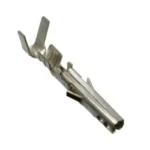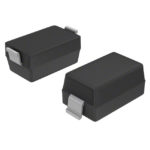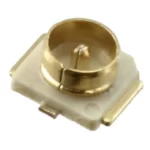Understanding the Basics: What is a Discrete Diode and How Does it Work?
Introduction to Discrete Diodes
As an electronic assistant, my job is to help you understand the basics of electronic components. One of the most important components in electronics is a discrete diode. In this article, we will discuss what a discrete diode is, how it works, its types, advantages and disadvantages, applications, how to choose the right diode for your application, common mistakes to avoid, and maintenance and troubleshooting of discrete diodes.
What is a Discrete Diode?
A discrete diode is a two-terminal electronic component that allows the flow of electric current in one direction and blocks it in the opposite direction. It is made up of a semiconductor material, usually silicon or germanium, with impurities added to create a p-n junction. The p-n junction is the boundary between the two regions of semiconductor material with different impurities. The p-region is positively charged, and the n-region is negatively charged. The p-n junction is responsible for the diode’s ability to conduct current in one direction and block it in the other direction.
A discrete diode is called “discrete” because it is a standalone component and not integrated with other components on a circuit board. A diode is a fundamental component in electronic circuits, and it is used in a wide range of applications.
How Does a Discrete Diode Work?
A discrete diode works by allowing the flow of electric current in one direction and blocking it in the opposite direction. When a voltage is applied across the diode in the forward direction, the diode conducts current. In the forward direction, the p-n junction is forward-biased, meaning the positive voltage is applied to the p-region, and the negative voltage is applied to the n-region. The forward-bias causes the depletion region, the region around the p-n junction with no free charge carriers, to decrease in size, allowing the flow of electric current.
In the reverse direction, the p-n junction is reverse-biased, meaning the positive voltage is applied to the n-region, and the negative voltage is applied to the p-region. The reverse-bias causes the depletion region to increase in size, blocking the flow of electric current.
Types of Discrete Diodes
There are various types of discrete diodes, each with its unique characteristics and applications. Some of the most common types include:
1. Rectifier Diode
A rectifier diode is used to convert AC voltage to DC voltage. It is designed to handle high current and high voltage.
2. Zener Diode
A Zener diode is used as a voltage regulator. It is designed to maintain a constant voltage across its terminals, even when the input voltage varies.
3. Schottky Diode
A Schottky diode is used in high-speed switching applications. It has a lower forward voltage drop than a regular diode, making it suitable for low-power applications.
4. Light Emitting Diode (LED)
An LED is a diode that emits light when forward-biased. It is used in lighting, displays, and indicators.
5. Varactor Diode
A Varactor diode is used as a voltage-controlled capacitor. It is used in tuning circuits and frequency modulation.
Advantages and Disadvantages of Discrete Diodes
Like any electronic component, discrete diodes have their advantages and disadvantages. Some of the advantages include:
- Low cost
- Small size
- High reliability
- Low power consumption
Some of the disadvantages include:
- Limited current handling capability
- Limited voltage handling capability
- Temperature sensitivity
- Nonlinear characteristics
Applications of Discrete Diodes
Discrete diodes are used in a wide range of applications, including:
1. Power Supplies
Rectifier diodes are used in power supplies to convert AC voltage to DC voltage.
2. Voltage Regulation
Zener diodes are used as voltage regulators to maintain a constant voltage across its terminals.
3. Switching
Schottky diodes are used in high-speed switching applications.
4. Lighting
LEDs are used in lighting, displays, and indicators.
5. Radio Communication
Varactor diodes are used in tuning circuits and frequency modulation.
How to Choose the Right Discrete Diode for Your Application
Choosing the right discrete diode for your application depends on various factors, including:
1. Voltage Rating
The voltage rating of the diode should be higher than the maximum voltage in the circuit.
2. Current Rating
The current rating of the diode should be higher than the maximum current in the circuit.
3. Speed
The diode’s speed should be suitable for the application. For high-speed applications, a Schottky diode is recommended.
4. Temperature Range
The diode should have a temperature range suitable for the application.
5. Package Type
The diode package type should be suitable for the application. There are various package types, including through-hole, surface mount, and chip.
Common Mistakes to Avoid When Working with Discrete Diodes
When working with discrete diodes, some common mistakes should be avoided, including:
1. Applying Reverse Voltage
Applying reverse voltage to a diode can cause it to fail. Always ensure that the diode is connected in the correct direction.
2. Exceeding Voltage and Current Ratings
Exceeding the diode’s voltage and current ratings can cause it to fail. Always ensure that the diode’s voltage and current ratings are suitable for the application.
3. Overheating
Overheating can damage the diode. Always ensure that the diode’s temperature range is suitable for the application.
4. Incorrect Biasing
Incorrect biasing can cause the diode to fail or operate incorrectly. Always ensure that the diode is correctly biased.
Maintenance and Troubleshooting of Discrete Diodes
Discrete diodes require minimal maintenance, and they are generally reliable. However, if a diode fails, it can cause problems in the circuit. Some common troubleshooting steps include:
1. Check for Reverse Voltage
Check that the diode is connected in the correct direction and that there is no reverse voltage applied.
2. Check for Voltage and Current Ratings
Check that the diode’s voltage and current ratings are suitable for the application.
3. Check for Overheating
Check that the diode’s temperature range is suitable for the application, and that it is not overheating.
4. Check for Incorrect Biasing
Check that the diode is correctly biased.
Conclusion
In conclusion, discrete diodes are essential components in electronic circuits. They allow the flow of current in one direction and block it in the opposite direction. There are various types of diodes, each with its unique characteristics and applications. When choosing a diode for your application, consider the voltage and current ratings, speed, temperature range, and package type. Common mistakes to avoid when working with discrete diodes include applying reverse voltage, exceeding voltage and current ratings, overheating, and incorrect biasing. Discrete diodes require minimal maintenance, but if they fail, troubleshooting steps should be taken to identify the problem.


